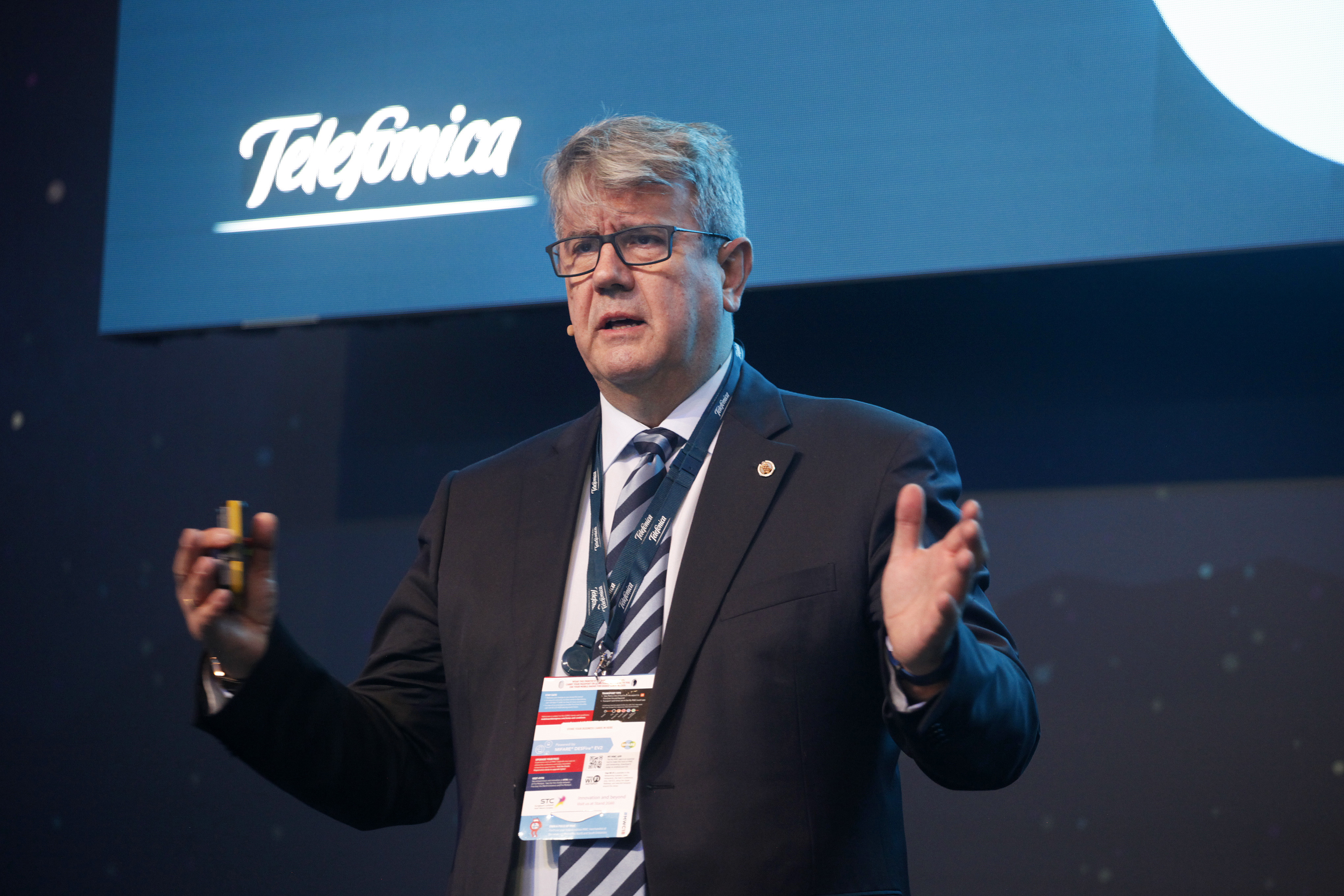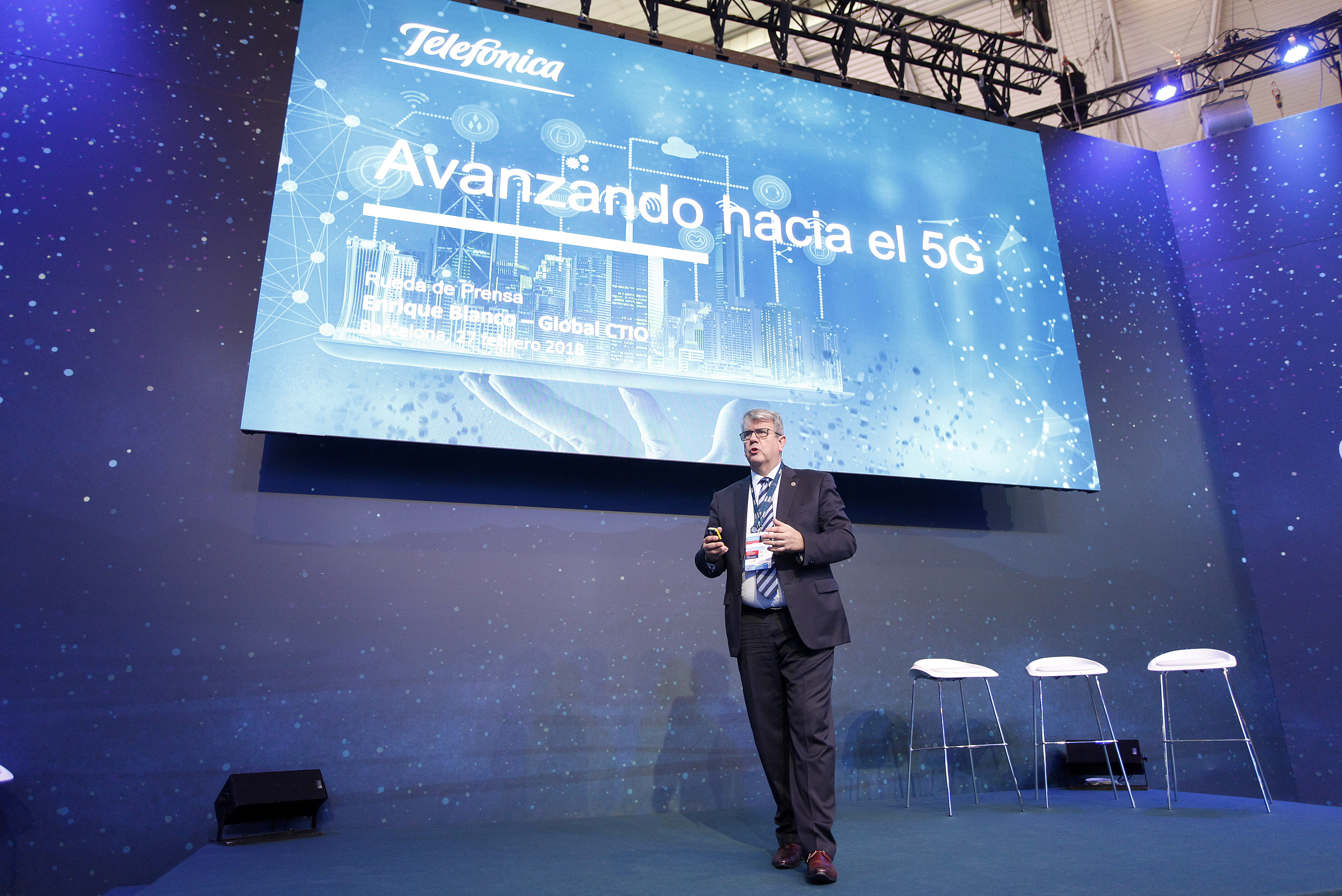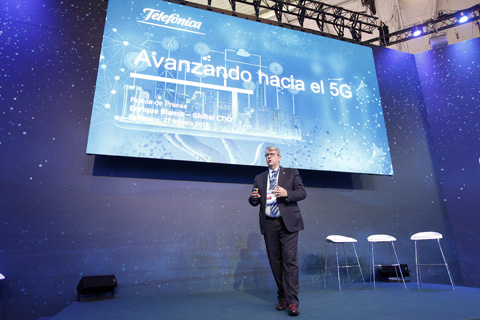- Telefónica reaffirms its leadership in innovation, demonstrating the concept of end-to-end Network Slicing, one of the great assets of 5G technology. At its booth, it demonstrates the possibility of delivering simultaneously distinct network capabilities to different types of service using a common infrastructure.
- Beyond voice, Telefónica shows an end-to-end 5G experience around a set of advanced services such as virtual reality, augmented reality applied to the industry 4.0 environment and critical communications services for emergency services.
- The company consolidates its pioneering network transformation project, UNICA: the base of the excellent connectivity and flexibility demanded by the customer, and a key element for Telefonica’s networks competitiveness to respond to the technological challenges ahead.
- It also shows a state of the art service proposal in the sector by using 5G spectrum through a 3.7 GHz carrier on TDD (43 band), which provides the necessary connectivity for all technology demonstrations at the stand.
Barcelona, 27 February 2018. Today, at the Mobile World Congress, Telefónica presented the development of its Telco Cloud-UNICA platform, by integrating a virtualised network function (virtual Evolved Packet Core-vEPC) and loading on it 4 network slices. This has demonstrated, on the one hand, the concept of 5G Network Slicing with end-to-end vision and, on the other, the advantages of the UNICA network transformation programme, a pioneer project run by Telefónica in the context of the industry which guarantees the competitiveness of its networks in the future. Fundamentally, it has shown the interrelation between the two, that is to say, the importance of network virtualisation for the optimal deployment of 5G technology and functionalities.
Telefónica keeps evolving towards the virtualization of its network, with the aim of increasing agility, flexibility, and scalability, based on the UNICA project. Through UNICA, the company continues defining a general purpose network and services architecture in a multi-vendor cloud environment, key to its versatility to incorporate new functionalities, including 5G. With the deployment of this Telco-Cloud architecture, Telefónica seeks the capacity to offer new services and applications, and to support traffic growth and connected devices which are difficult to manage using existing network architectures. This is possible thanks to network virtualization technologies, which are able to implement different nodes on the same infrastructure and, therefore, redistribute capacity where necessary, improving both the scaling and the elasticity of the network, and thus speeding up the provision of services and significantly improving time to market.
Regarding to 5G technology, Telefónica continues to work on its development, both in our laboratories and through different proofs of concept and use cases, more than ten of these during 2017. Telefónica’s concept of 5G technology is from an evolving perspective with regard to radio capabilities and revolutionary in terms of network architecture. Thus, while in terms of radio we will see a new leap in capacity and performance through extended bandwidths and improvements in radio and antenna technology, it will be in relation to the architecture -how this is developed, deployed and the services operated- where 5G will be truly differential with respect to previous technologies. This is a new network based on programmable, flexible, scalable, efficient and open software, which will provide a platform through which both Telefonica and third parties may offer services to our end-customers (B2X and B2B2X, respectively).
The main characteristic of the new architecture is its ability to isolate logical networks, with specific features and capabilities, on the same physical infrastructure. This is referred to as Network Slicing, and it makes it possible to deliver different network capabilities to different types of services, a key aspect in the deployment of 5G networks. The demos which Telefonica exhibits at its MWC stand revolve around this concept. Telefónica presents 4 network slices – 4 demos, in fact – showing the results of its work on innovation and its technological leadership, and how it is possible to apply technology as a tool for differentiation at the service of applications of the future.
Each one of the 4 network slices provides different capabilities: one for connectivity, a case of virtual reality applied to a digital twin service; a service showing the innovative concept of RAN Slicing applied to critical communications, in particular emergency services; and, finally, an augmented reality service for remote assistance in the framework of the concept of digital industry.
Telefónica also showcased its state of the art value proposal in the sector by using 5G spectrum, thanks to a 3.7 GHz carrier in TDD (band 43) which provides the required connectivity for the range of technology demos at the booth. These demos present advanced services use cases that work on different network slices built on Telefonica’s virtualized network. The company has developed these demos with the collaboration of Huawei, Ericsson and Netsia.
- Use case 1/Low-latency and high capacity communications slice: a Virtual Reality experience based on the Digital Twins concept, where objects from the physical world are reproduced virtually in real time. The demo shows capabilities of 5G with regard to bandwidth and ultra-low latency, making the provision of such services possible. (http://www.huawei.com/en/press-events/news/2018/2/5G-Slicing-based-Interactive-VR-Service)
- Use case 2/ Augmented reality slice: this combines the transmission of high definition video with the reception of localised, virtual information, which allows a real image to be produced on the screen using virtual images (in this case a pair of glasses). The demo recreates remote assistance to a field technician within the framework of the digital industry concept. The demo displays the impact of latency and bandwidth in the case of augmented reality when sending video on real time and network slicing advantages. It also demonstrates the separation of the data level and the control level, so that it is possible to leave data traffic in the user’s environment, which reduces the latency derived from the distance, as these do not have to reach the core network.
- Use case 3/Emergency services slice: main feature of this demo is the availability of the service in a way that it instantly guarantees to a hypothetical public security service, the necessary to ensure communications, as well as monitoring the emergency situation itself. In this demo, RAN Slicing completes end to end network slicing, as radio resources are ultimately the basic building blocks to be shared (or sliced) among users. RAN Slicing technology is specifically used for this demo, reproducing a private LTE network with the ability to be sub-divided into multiple slices which, at RAN level, can offer different performances, latencies, and radio resources to different sets of customers. The result of such integration demonstrates that SDN/NFV techniques can be successfully applied to the RAN, hence completing the last piece of the puzzle towards an effective end-to-end network slicing. (https://www.telefonica.com/en/web/press-office/-/telefonica-and-netsia-complete-successful-integration-of-a-virtualized-ran-platform-in-telefonica-labs-to-demonstrate-ran-slicing)
Enrique Blanco, Telefonica CGTIO explained that “Telefónica remains committed to the development of 5G technology, which will necessarily open up our telecommunications ecosystem to a wide range of vertical industries. We have devoted many years to creating and transforming our networks, because we understand that it is essential to be flexible and scalable, and because only through virtualization we can respond to the requirements posed by the industry, which are radically varied and even contradictory among themselves”.
These demos may be experienced at the Telefónica stand at the Mobile World Congress.

Enrique Blanco, Telefónica CGTIO 
Enrique Blanco, Telefónica CGTIO








